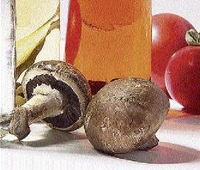
Here are some of the stories which you, our readers, found interesting:
Cooking oil is not the enemy (August 26)
Oils and fats have their place in a well-balanced diet. They do more than just make food taste nice, clog up arteries and trigger life-threatening diseases. For example, oils or fats are added to salads to assist in the absorption of nutrients. Fats also contribute to the regulation of the body's functions and are sources of essential fatty acids important in growth, vitamin-absorption and healthy skin.
The trick in adding oils and fats to the diet is to walk the thin line between health and disease. These items are at the tip of the food chart, for a reason - they are required only in small servings. Besides serving size, it is also important to become aware of the types of fats. There are 'good' fats and 'bad' fats. Pay attention to this when choosing cooking oil.
Are you male or female? (September 2)
It is generally believed that the embryo by default is female. Females carry two X chromosomes (XX) among the 23 pairs of chromosomes in each cell. In about the seventh week, the embryonic presence of the Y chromosome (XY) provides instructions for the development of male characteristics. The hormone, testosterone is produced and the structures become male.
However, as Dr Leslie Gabay, Kingston-based paediatric endocrinologist, points out, many things can go wrong in the change process.
"On the Y chromosome, there is a code that converts the primitive gonad to testicles. The testicles then produce testosterone then change (the embryo) to male," he said. "(But) we could have XY but don't get the code across, so stay female ... our hormones are like keys that (have to) fit into a lock so that we can get the effect of the hormones. So we could have normal testicles, testosterone but don't have the lock to fit into, so don't get the conversion to male. This is called androgen insensitivity syndrome."
The darker side of skin bleaching (November 11)
Melanin is the dark-brown pigment in the skin which makes us dark. Melanin protects the skin from the cancer-causing ultraviolet rays of the sun. The more melanin our skin produces, the darker we appear. Lighter skin has less melanin. So, an effective way to attain lighter skin is to reduce the amount of melanin in the skin. This is exactly what bleaching products do.
Bleaching products kill melanocytes, skin cells which produce the pigment, melanin. No melanin, no colour. In reducing melanin, we increase the body's exposure to sunlight and increase our chances of getting skin damage and cancers (melanoma).